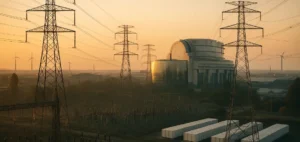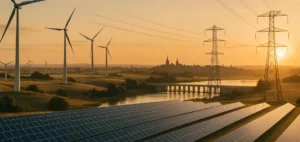Typhoon Shanshan, approaching the western coast of Japan, is causing major disruptions in the energy sector.
Several gas- and coal-fired power plants in the Kansai, Chugoku, Shikoku and Kyushu regions are limiting their output due to fuel supply restrictions.
The cuts follow delays in liquefied natural gas (LNG) and coal deliveries, caused by the evacuation of ships in the Seto Naikai area, in accordance with Japan Coast Guard directives.
The spot electricity market, represented by the Japan Electric Power Exchange, recorded a significant increase in prices, reaching 19.30 Yen/kWh, up 17.8% on the previous day.
Kansai Electric Power Co. plants at Himeji Daini and Himeji Daiichi announce production cuts on several gas-fired units, each reducing output by 332 MW.
For its part, J-POWER, or Electric Power Development Co. is reducing output from its coal-fired unit at Matsuura by 600 MW, and is also adjusting its operations at Matsushima.
Kyushu Electric is also adjusting production levels at several sites.
Measures are being put in place to minimize the impact of fuel transport delays.
Impact on the electricity market and risk management
The disruptions caused by Shanshan amplify the volatility of electricity prices in the regions concerned.
Producers’ operational adjustments are accompanied by increased tension on the power grid, where reduced supply is confronted by stable demand.
This situation highlights the country’s dependence on imported fossil fuels, and the need to enhance the flexibility of the energy market in the face of climatic contingencies.
Supply delays, exacerbated by maritime evacuations, underline the vulnerability of energy logistics chains.
The temporary closure of certain units at the Shikoku Electric Power and Kyushu Electric Power plants in response to these logistical constraints is an illustration of the need to anticipate disruptions to LNG and coal supplies.
The rapid adjustments made by operators demonstrate effective risk management in the face of climatic events.
Resilience challenges for energy operators
Shanshan-related events are prompting energy market players to review their fuel stock management strategies and consider more weather-resistant infrastructures.
The ability to maintain grid stability, while limiting the impact of logistical interruptions, is essential to avoid prolonged price rises and guarantee security of supply.
Companies also need to assess the possibility of further diversifying supply sources and storage options.
This includes modernizing existing infrastructures and optimizing production capacity in times of crisis.
The decisions taken today will determine Japan’s ability to maintain a reliable power supply in adverse weather conditions.
Reflections on energy policy in Japan
Typhoon Shanshan’s impact on the electricity market raises questions about Japan’s approach to energy security.
Current dependence on imported fossil fuels and infrastructures vulnerable to extreme weather events are forcing a rethink of national energy strategy.
While the focus is on immediate response to disruptions, discussions are intensifying on the need for a more robust infrastructure and diversification of energy sources.
The aim remains to maintain continuity of supply while mitigating the risks associated with climatic hazards.
The sector must therefore combine short-term measures, such as improving risk management, with long-term strategies aimed at strengthening the overall resilience of the energy system.





















